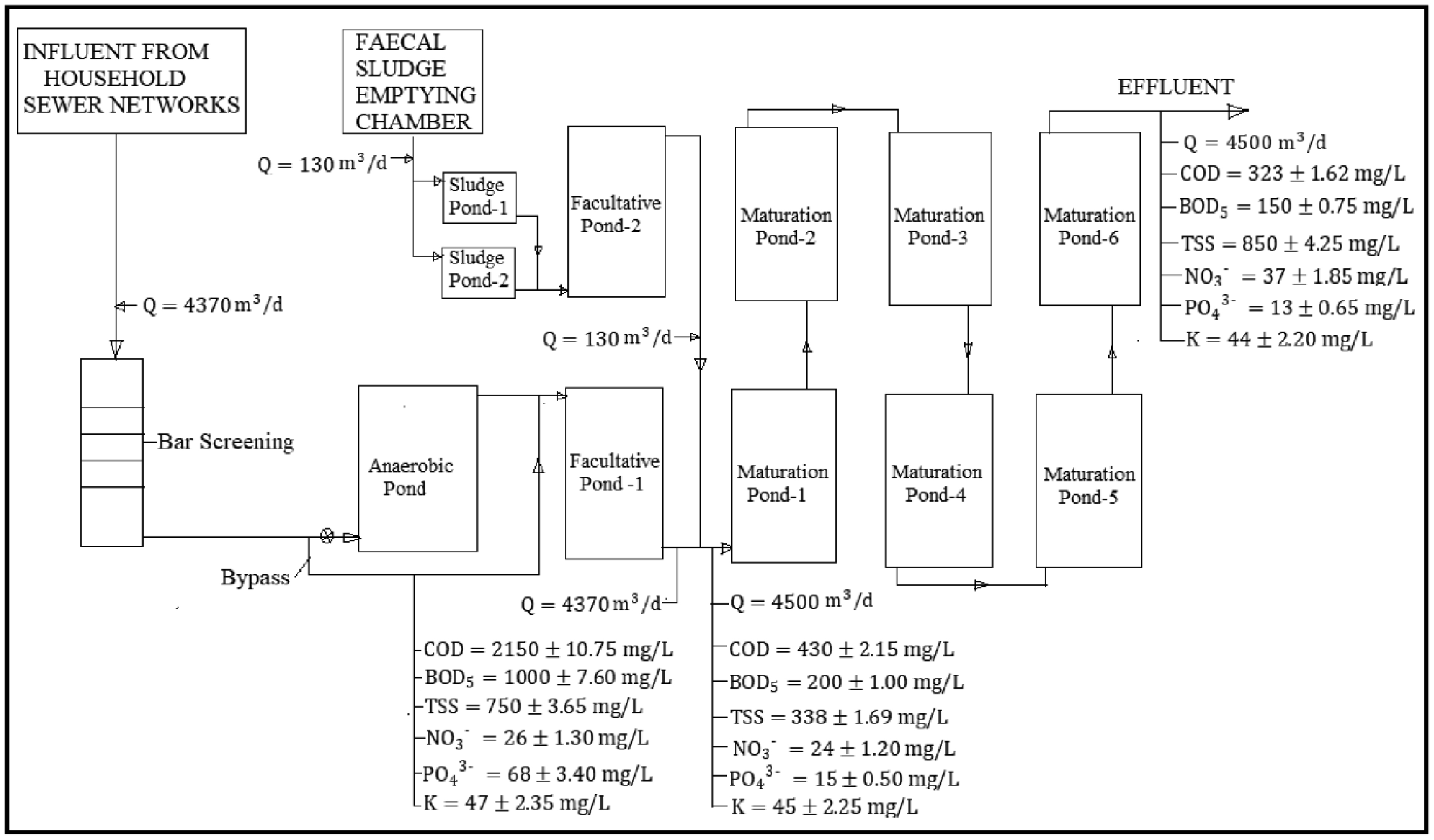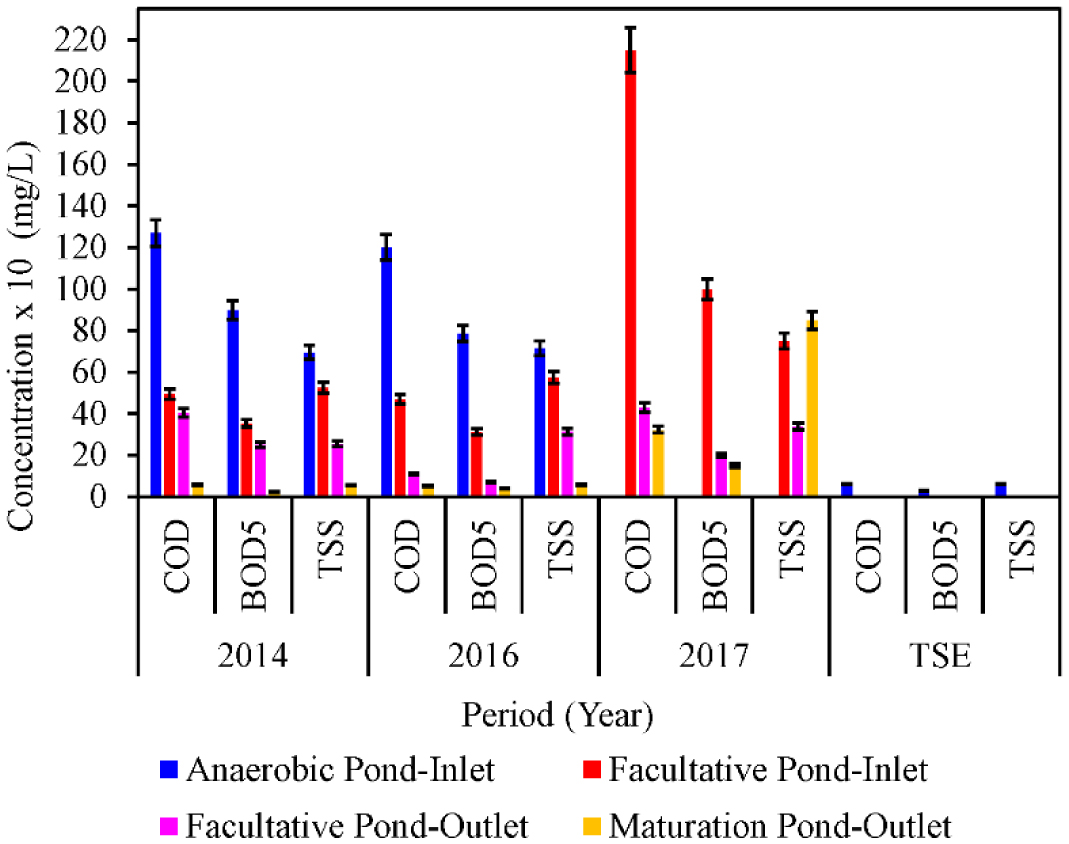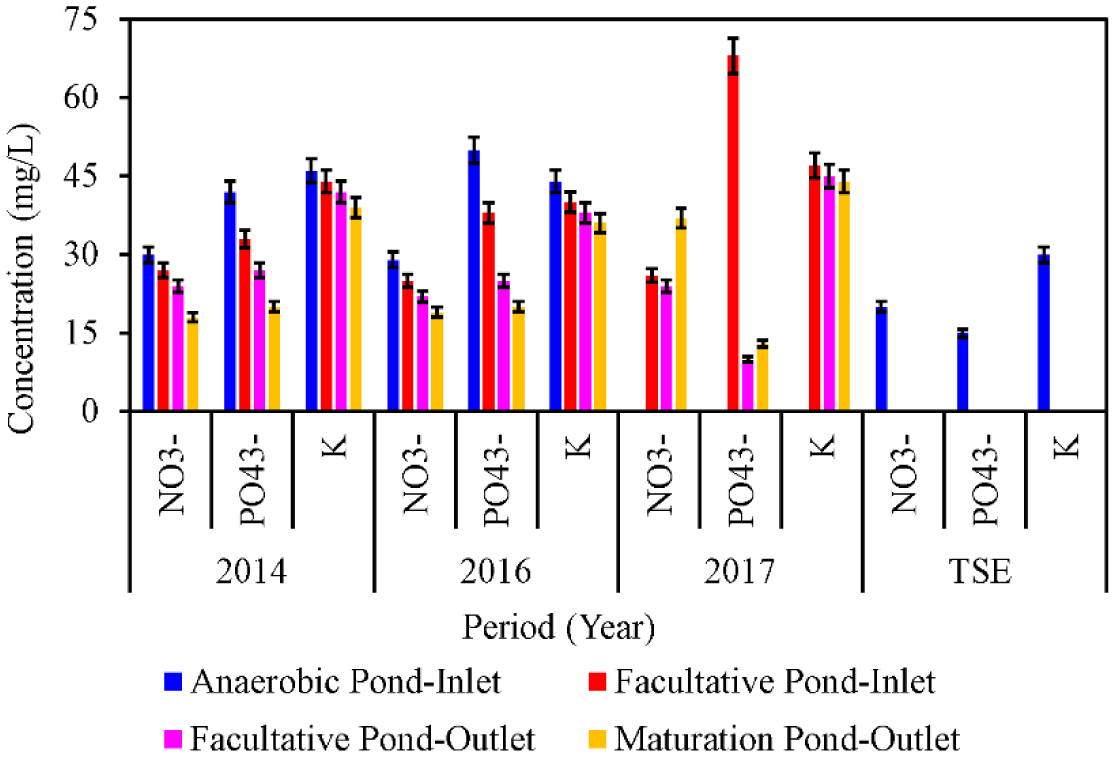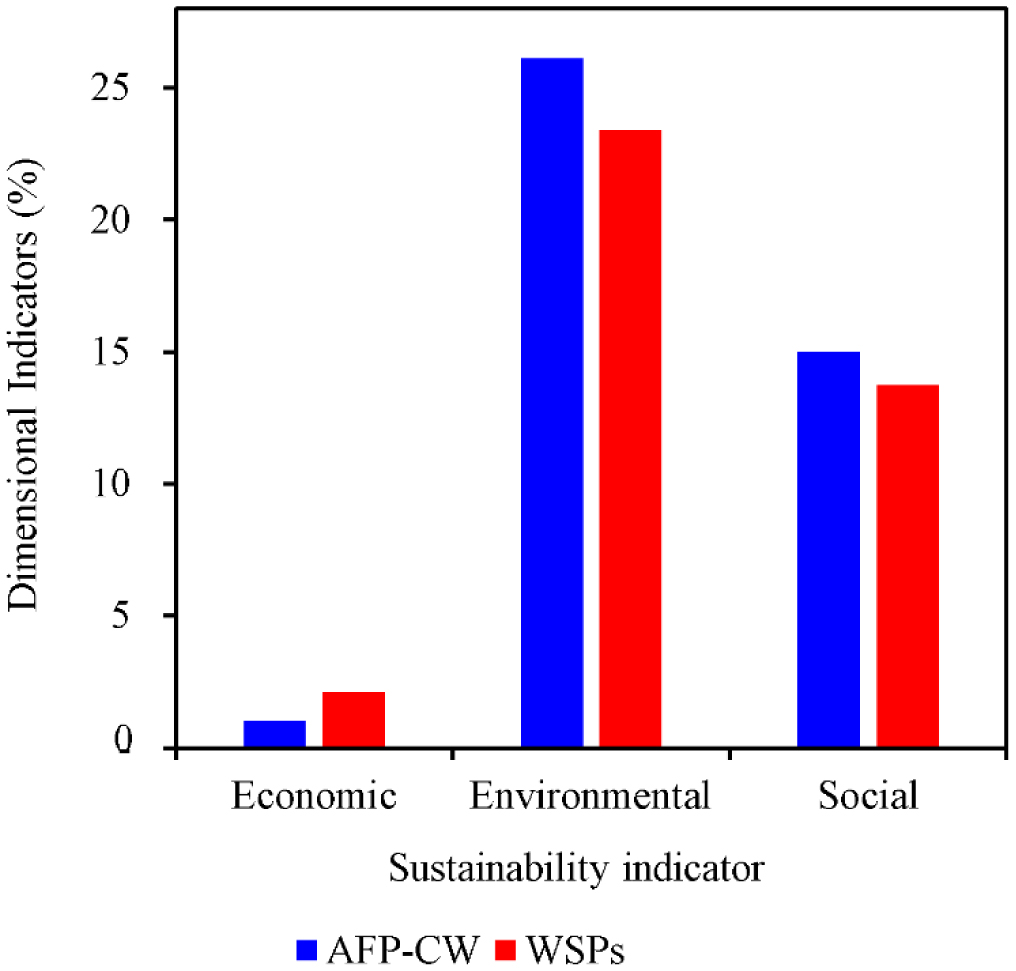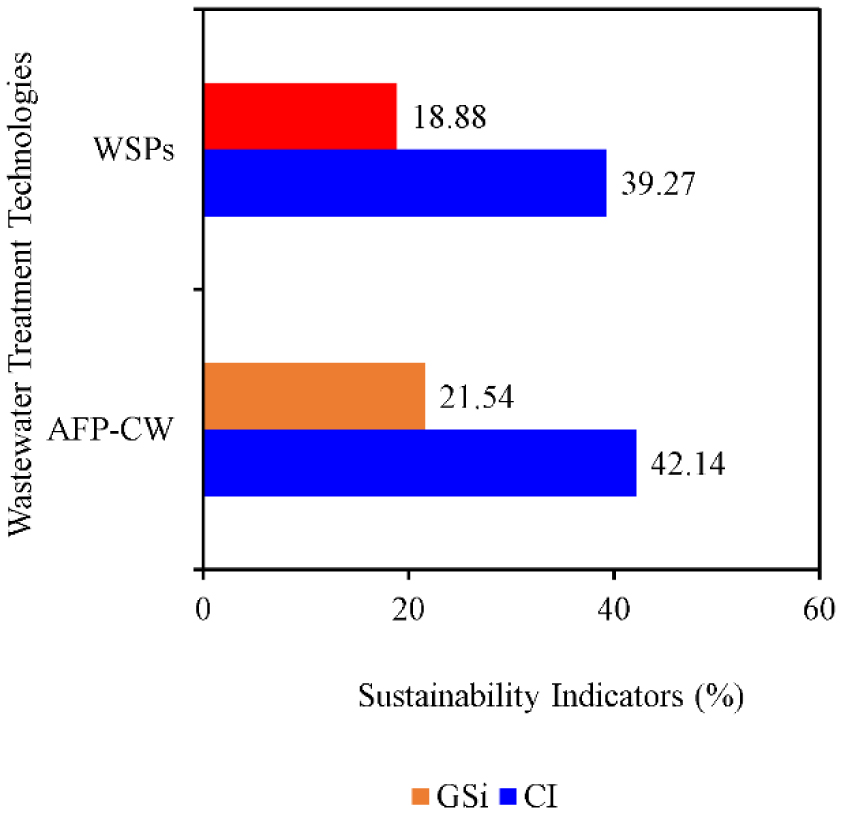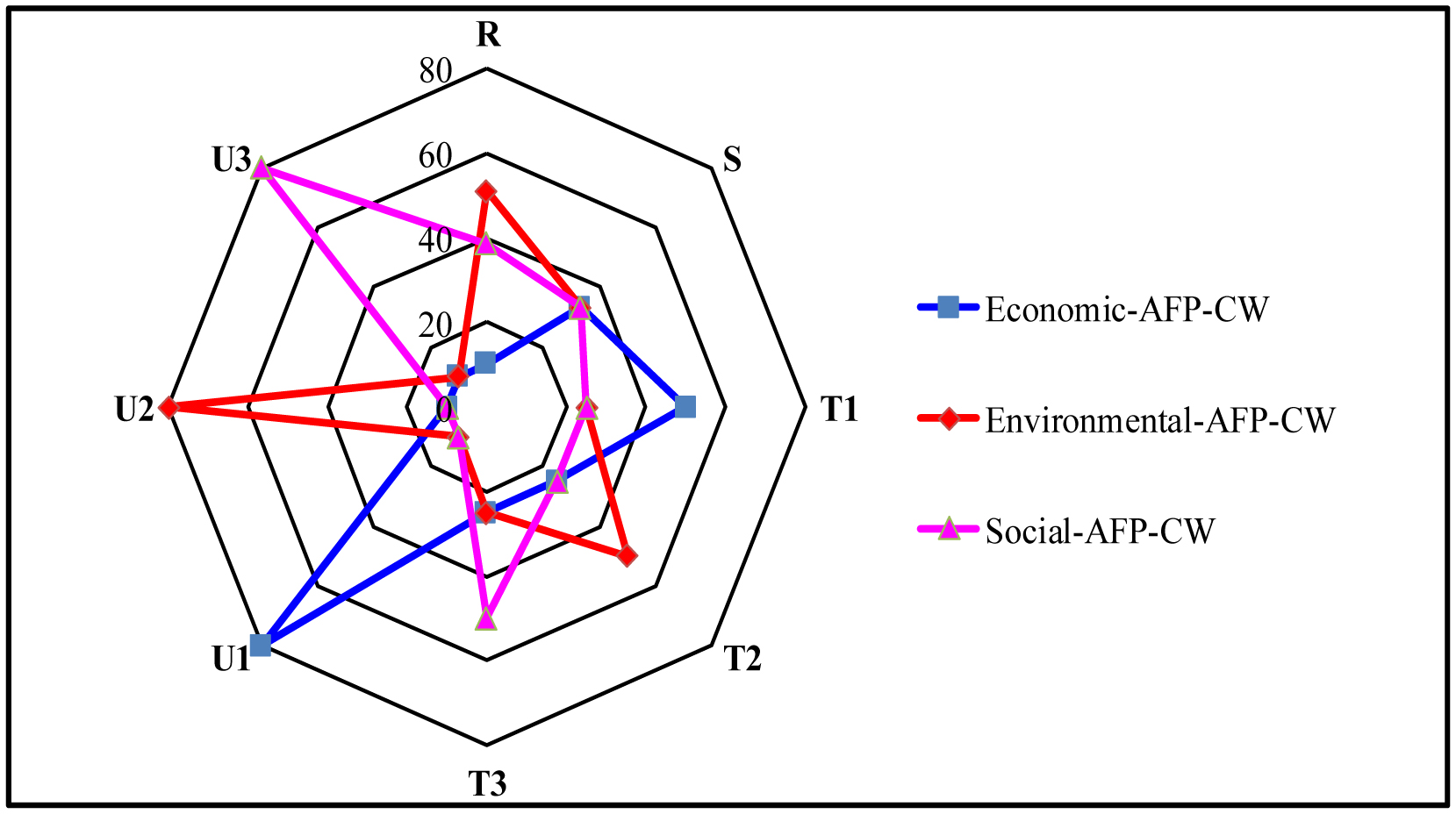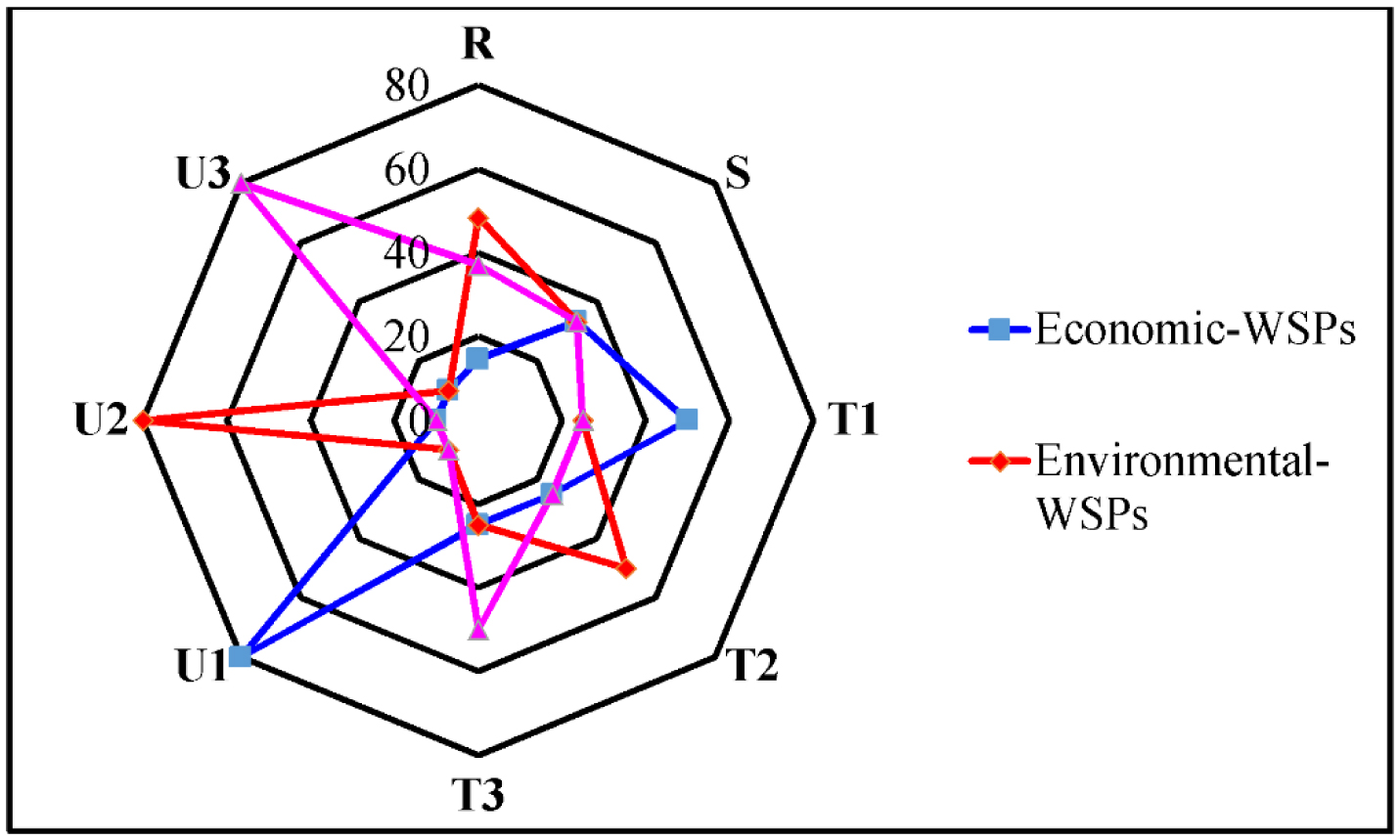1.
Introduction
Uncertainty can be present in nearly every aspect of contemporary problems. To deal with the uncertainties, numerous uncertainty theories are available, including the fuzzy set (FS) [1], the intuitionistic FS (IFS) [2], the Pythagorean FS (PFS) [3,4], the neutrosophic set (NSS) [5], and the Fermatean fuzzy set (FFS) [6]. An element of a fuzzy set (FS), introduced by Zadeh [1], has a corresponding membership degree (MD). Later, Atanassov [2] introduced the concept of an IFS. According to Yager [4], the concept of PFSs was originally established in 2014, and it is classified by an MD and degree of non-membership (NMD) that satisfy the criterion, "that the sum of the squares of its MD and NMD is less than 1". Unfortunately, if the square sum of the MD and NMD of a certain property exceeds 1, decision making (DM) becomes problematic. Senapati et al. [6] proposed the concept of an FFS in 2019 and condition that the cubic total of the MD and NMD cannot exceed 1. Rahman et al. [7] utilized geometric AOs on interval-valued PFS (IVPFS) to approach DM problems in various geometric AOs on IVPFS. Rahman et al. [8] developed a method for MAGDM employing induced IVPFS with Einstein AO.
The TOPSIS process requires obtaining a preference order that is prioritized by relative proximity, calculating distances to the different ideal solutions, and combining these two distance measures. In 2018, Akram et al. [9] proposed the bipolar FS employing TOPSIS for group decision making (GDM). Adeel et al. [10] proposed the m-polar fuzzy linguistic TOPSIS technique for MCGDM. In 2018, Peng and Dai [11] generated the concept of single-valued neutrosophic set (NSS) using MABAC and TOPSIS. Zhang and Xu [12] reported an extension of PFS using TOPSIS. Hwang et al. [13] offered a practical explanation of the MADM concept. Jana et al. [14] discussed PFS using Dombi aggregating operators (AOs) in 2019. Ullah et al. [15] talked about complex PFS and the usage of pattern recognition in 2019. Jana et al. [16] for developed the Trapezoidal NSS using AOs and their application to the MADM in 2020. Jana et al. [17] proposed the idea of the MCDM technique based on SVTrN Dombi AOs. Yang et al. [18] described fuzzy c-numbers clustering algorithms for fuzzy data in 1996. Palanikumar et al. [19] investigated several algebraic structures and their applications in several studies. NSS is a recent theory that is attributed to Smarandache [5]. The term neutrosophy is defined as knowledge of the neutral mind and the neutrality that differentiates FS from IFS. Each element's of truth degree (TD), indeterminacy degree (ID) and false degree (FD) are represented by NSS, and they range from 0 to 1. The NSS approach generalizes the FS and IVFS. Smarandache et al. [20] established a new concept for Pythagorean neutrosophic sets with an interval-valued set. Using context analysis [21] and the NSS, a medical diagnosis can be made using the single-valued NSS [22]. The distances for IFSs, such as Hamming distance (HD), Euclidean distance (ED) normalized HD, and normalized ED, were expanded by Ejegwa [23]. It has been demonstrated that a NSS generalizes a classical set, FS and IVFS. The Pythagorean neutrosophic interval-valued set (PyNSIVS) was developed by Smarandache et al. [20]. The single-valued NSS is discussed using context analysis [21] and medical diagnosis [22]. Ejegwa [23] extended the distance measures for IFSs, such as HD, ED normalized HD and normalized ED. Recently, Palanikumar et al. [24] discussed the MADM using spherical vague normal operators and their applications for the selection of farmers. Recently, Garg et al. [25] discussed the new notion of confidence levels-based cubic Fermatean fuzzy AOs and their application to MCDM problems. Chakraborty et al. [26] discussed the real life applications based on Fermatean fuzzy Bonferroni mean AOs for selecting optimal health care waste treatment technology. Zeb et al. [27] interacted with the Fermatean fuzzy soft AOs and their application in symptomatic treatment of COVID-19. Khan et al. [28] discussed the concept of generalized neutrosophic cubic AOs using MADM method.
In order to better understand Type-Ⅱ Fermatean normal number (Type-Ⅱ FNN) information, this study will expand on the idea of Type-Ⅱ Fermatean information. We can get Type-Ⅱ FN data from AOs. This paper consists of seven sections. In Section 2, you will find a concise overview of Type-Ⅱ Fermatean information. A Type-Ⅱ FNN MADM is discussed in Section 3 for different AOs. For various AOs, Type-Ⅱ FNN MADM is discussed in Section 4. Section 5 presents an example, analysis, and discussion of a method based on Type-Ⅱ FNN. In Section 6, a conclusion is presented. In decision making, we may have one problem
So, we introduced the condition that
Consequently, this work makes the following contributions:
(1) It has been established that Type-Ⅱ FNN satisfy some basic algebraic operations, such as associative, distributive and idempotent laws.
(2) We introduced HD and ED for Type-Ⅱ FNNs. In order to calculate the ED between two Type-Ⅱ FNNs. Furthermore, there is a discussion regarding converting Type-Ⅱ FNNs to NFNs.
(3) It is demonstrated numerically how MADMs and AOs are applied in Type-Ⅱ FNN to real-world scenarios. A Type-Ⅱ FNN algorithm needs to be developed. We also need to determine a normalized decision matrix using a Type-Ⅱ FNN algorithm.
(4) In relation to Type-Ⅱ FNWA, Type-Ⅱ FNWG, Type-Ⅱ GFNWA, and Type-Ⅱ GFNWG. We determined the ideal value of each concept.
(5) By using the Type-Ⅱ FNWA, Type-Ⅱ FNWG, Type-Ⅱ GFNWA, and Type-Ⅱ GFNWG operators, different ranking results of alternatives can be derived flexibly, so that a decision-maker may select the ranking result according to his or her preferences. Due to its strong flexibility, the method proposed in this paper is appealing. The results of the DM are based on integer δ.
2.
Basic concepts
We discuss some common definitions in this section.
Definition 2.1. [4] Let Θ be a universe. The PyFS Ξ in Θ is Ξ={ε,⟨τtΞ(ε),τfΞ(ε)⟩|ε∈Θ}, where τtΞ:Θ→[0,1] and τfΞ:Θ→[0,1] denotes the MD and NMD of ε∈Θ to Ξ, respectively, and 0⪯(τtΞ(ε))2+(τfΞ(ε))2⪯1. For convenience, Ξ=⟨τtΞ,τfΞ⟩ is called the Pythagorean fuzzy number (PyFN).
Definition 2.2. [5] The NSS Ξ in Θ is Ξ={ε,⟨τtΞ(ε),τiΞ(ε),τfΞ(ε)⟩|ε∈Θ}, where τtΞ:Θ→[0,1], τiΞ:Θ→[0,1] and τfΞ:Θ→[0,1] denotes the TD, ID and FD of ε∈Θ to Ξ, respectively and 0⪯τtΞ(ε)+τiΞ(ε)+τfΞ(ε)⪯3. Here, Ξ=⟨τtΞ,τiΞ,τfΞ⟩ represents a neutrosophic number (NSN).
Definition 2.3. [20] The Pythagorean NSS (PyNSS) Ξ in Θ is Ξ={ε,⟨τtΞ(ε),τiΞ(ε),τfΞ(ε)⟩|ε∈Θ}, where τtΞ:Θ→[0,1], τiΞ:Θ→[0,1] and τfΞ:Θ→[0,1] denotes the TD, ID and FD of ε∈Θ to Ξ, respectively, and 0⪯(τtΞ(ε))2+(τiΞ(ε))2+(τfΞ(ε))2⪯2. Here, Ξ=⟨τtΞ,τiΞ,τfΞ⟩ represents a Pythagorean neutrosophic number (PyNSN).
Definition 2.4. [6] A FFS Ξ in Θ is Ξ={ε,⟨τtΞ(ε),τfΞ(ε)⟩|ε∈Θ}, where τtΞ(ε) and τfΞ(ε) denotes MD and NMD of u respectively, where τtΞ:Θ→[0,1] and τfΞ:Θ→[0,1] and 0⪯(τtΞ(ε))3+(τfΞ(ε))3⪯1. Here, Ξ=⟨τtΞ,τfΞ⟩ represents a Fermatean fuzzy number (FFN).
Definition 2.5. [6] For any FFNs, Ξ=⟨τt,τf⟩, Ξ1=⟨τt1,τf1⟩ and Ξ2=⟨τt2,τf2⟩. Let τt,τf denote MD and NMD of u, respectively, and δ is a positive integer. Then,
(1) Ξ1⊘Ξ2=(3√(τt1)3+(τt2)3−(τt1)3⋅(τt2)3,(τf1⋅τf2)).
(2) Ξ1⊛Ξ2=((τt1⋅τt2),3√(τf1)3+(τf2)3−(τf1)3⋅(τf2)3).
(3) δ⋅Ξ=(3√1−(1−(τt)3)δ,(τf)δ).
(4) Ξδ=((τt)δ,3√1−(1−(τf)3)δ).
Definition 2.6. [6] Let Ξ=⟨τt,τf⟩ be a FFN. Then, S(Ξ)=(τt)3−(τf)3,S(Ξ)∈[−1,1], is called the score function, and H(Ξ)=(τt)3+(τf)3,H(Ξ)∈[0,1], is called the accuracy function.
Definition 2.7. [18] Let M1=(υ1,ς1) and M2=(υ2,ς2) and then the distance between M1 and M2 is ℧(M1,M2)=2√(υ1−υ2)2+12(ς1−ς2)2.
Definition 2.8. [18] Let M(x)=e−(x−υς)2,(ς>0), be a fuzzy number (FN). It is said to be a normal fuzzy number (NFN) if M=(υ,ς), and N.
3.
Distance measure for Type-Ⅱ FNN
We discuss the distance between two Type-Ⅱ Fermatean normal numbers (Type-Ⅱ FNNs) in this section.
Definition 3.1. A Type-II Fermatean set Ξ in Θ is Ξ={ε,⟨τtΞ(ε),τiΞ(ε),τfΞ(ε)⟩ |ε∈Θ}, where τtΞ(ε), τiΞ(ε) and τfΞ(ε) are called TD, ID and FD of Ξ, respectively. The mapping τtΞ:Θ→[0,1], τiΞ:Θ→[0,1], τfΞ:Θ→[0,1], and 0⪯(τtΞ(ε))3+(τiΞ(ε))3+(τfΞ(ε))3⪯2. Here, Ξ=⟨τtΞ,τiΞ,τfΞ⟩ represents a Type-II Fermatean number (Type-II FN).
Definition 3.2. Let (υ,ς)∈N, Ξ=⟨(υ,ς);τt,τi,τf⟩ is a Type-II FNN, where its TD, ID and FD are defined as τtΞ=τtΞe−(x−υς)3, τiΞ=τiΞe−(x−υς)3 and τfΞ=1−(1−τfΞ)e−(x−υς)3, x∈X, respectively, where X is a non-empty set, τtΞ,τiΞ,τfΞ∈[0,1], and 0⪯(τtΞ(x))3+(τiΞ(x))3+(τfΞ(x))3⪯2.
Definition 3.3. If Ξ1=⟨(υ1,ς1);τt1,τi1,τf1⟩ and Ξ2=⟨(υ2,ς2);τt2,τi2,τf2⟩ are any two Type-II FNNs, and δ is a positive integer. Then,
(1) Ξ1⊘Ξ2=((υ1+υ2,ς1+ς2);3δ√(τt1)3δ+(τt2)3δ−(τt1)3δ⋅(τt2)3δ,δ√(τi1)δ+(τi2)δ−(τi1)δ⋅(τi2)δ,(τf1⋅τf2)).
(2) Ξ1⊛Ξ2=((υ1⋅υ2,ς1⋅ς2);(τt1⋅τt2),δ√(τi1)δ+(τi2)δ−(τi1)δ⋅(τi2)δ,3δ√(τf1)3δ+(τf2)3δ−(τf1)3δ⋅(τf2)3δ).
(3) δ⋅Ξ1=((δ⋅υ1,δ⋅ς1);3δ√1−(1−(τt1)3δ)δ,(τi1)δ,(τf1)δ).
(4) Ξδ1=((υδ1,ςδ1);(τt1)δ,(τi1)δ,3δ√1−(1−(τf1)3δ)δ).
We now define the ensuing theorem in terms of the operator mentioned earlier.
Theorem 3.1. Let Ξ1=⟨(υ1,ς1);τt1,τi1,τf1⟩, Ξ2=⟨(υ2,ς2);τt2,τi2,τf2⟩ and Ξ3=⟨(υ3,ς3);τt3,τi3,τf3⟩ be the Type-II FNNs. Then,
(1) Ξ1⊘Ξ2=Ξ2⊘Ξ1.
(2) (Ξ1⊘Ξ2)⊘Ξ3=Ξ1⊘(Ξ2⊘Ξ3).
(3) Ξ1⊛Ξ2=Ξ2⊛Ξ1.
(4) (Ξ1⊛Ξ2)⊛Ξ3=Ξ1⊛(Ξ2⊛Ξ3).
Proof. The proofs are straightforward.
Definition 3.4. Let Ξ1=⟨(υ1,ς1);τt1,τi1,τf1⟩ and Ξ2=⟨(υ2,ς2);τt2,τi2,τf2⟩ be the Type-II FNNs. Then, the ED between Ξ1 and Ξ2 is
The HD between Ξ1 and Ξ2 is
Theorem 3.2. Let Ξ1=⟨(υ1,ς1);τt1,τi1,τf1⟩, Ξ2=⟨(υ2,ς2);τt2,τi2,τf2⟩ and Ξ3=⟨(υ3,ς3);τt3,τi3,τf3⟩ be any three Type-II FNNs. Then,
(1) ℧E(Ξ1,Ξ2)=0 if and only if Ξ1=Ξ2.
(2) ℧E(Ξ1,Ξ3)⪯℧E(Ξ1,Ξ2)+℧E(Ξ2,Ξ3).
Proof. We will prove (2). Now,
Here, Φ1=1+(τt1)3+(τi1)3−(τf1)33,Φ2=1+(τt2)3+(τi2)3−(τf2)33 and Φ3=1+(τt3)3+(τi3)3−(τf3)33.
Thus, ℧E(Ξ1,Ξ3)⪯℧E(Ξ1,Ξ2)+℧E(Ξ2,Ξ3).
Theorem 3.3. For any three Type-II FNNs Ξ1=⟨(υ1,ς1);τt1,τi1,τf1⟩, Ξ2=⟨(υ2,ς2);τt2,τi2,τf2⟩ and Ξ3=⟨(υ3,ς3);τt3,τi3,τf3⟩,
(1) ℧H(Ξ1,Ξ2)=0 if and only if Ξ1=Ξ2.
(2) ℧H(Ξ1,Ξ2)=℧H(Ξ2,Ξ1).
(3) ℧H(Ξ1,Ξ3)⪯℧H(Ξ1,Ξ2)+℧H(Ξ2,Ξ3).
Remark 3.1. Since Ξ1=⟨τt1,τi1,τf1⟩=⟨1,1,0⟩, Ξ2=⟨τt2,τi2,τf2⟩=⟨1,1,0⟩. Then, the distance between Type-II FNN is transformed to the distance between NFN.
4.
Aggregation operators for Type-Ⅱ FNN
We introduced the new AOs for Type-Ⅱ FNN in this section.
4.1. Type-Ⅱ FN weighted averaging (Type-Ⅱ FNWA) operator
Definition 4.1. Let Ξp=⟨(υp,ςp);τtp,τip,τfp⟩ be the Type-II FNNs, where p=1,2,...,n, ξp be a weight of Ξp and ξp⪰0, ∑np=1ξp=1. Then, Type-II FNWA(Ξ1,Ξ2,...,Ξn)=∑np=1ξpΞp.
Theorem 4.1. Let Ξp=⟨(υp,ςp);τtp,τip,τfp⟩ be Type-II FNNs, where p=1,2,...,n. Then,
Proof. The mathematical induction method yields the proof.
If n=2, Type-Ⅱ FNWA(Ξ1,Ξ2)=ξ1Ξ1⊘ξ2Ξ2, where,
and
Using Definition 3.3, we get
Using induction, n⪰3,
If n=k+1,
It holds for any k.
Theorem 4.2. If Ξp=⟨(υp,ςp);τtp,τipτfp⟩ are Type-II FNNs, and Ξp=Ξ, then Type-II FNWA (Ξ1,Ξ2,...,Ξn)=Ξ, where p=1,2,...,n.
Proof. Given that, (υp,ςp)=(υ,ς), (τtp,τip,τfp)=(τt,τi,τf), for p=1,2,...,n and ∑np=1ξp=1. By using Definition 3.3, we get,
4.2. Type-Ⅱ FN weighted geometric (Type-Ⅱ FNWG) operator
We define the Type-Ⅱ FN weighted geometric operator (Type-Ⅱ FNWG) in this section.
Definition 4.2. Let Ξp=⟨(υp,ςp);τtp,τip,τfp⟩ be the Type-II FNNs and ξp be a weight of Ξp. Then Type-II FNWG (Ξ1,Ξ2,...,Ξn)=∏np=1Ξξpp, where p=1,2,...,n.
Theorem 4.3. If Ξp=⟨(υp,ςp);τtp,τfp⟩ are Type-II FNNs where p=1,2,...,n, then
Proof. The mathematical induction method yields the proof.
If n=2, Type-Ⅱ FNWG(Ξ1,Ξ2)=Ξξ11⊛Ξξ22, where,
By using Definition 3.3, we get,
Hence,
For n=k⪰3,
If n=k+1,
Corollary 4.1. Let Ξp=⟨(υp,ςp);τtp,τipτfp⟩ be Type-II FNNs, and all are equal with Ξp=Ξ. Then Type-II FNWG(Ξ1,Ξ2,...,Ξn)=Ξ.
4.3. Type-Ⅱ generalized FNWA (Type-Ⅱ GFNWA) operator
We define the Type-Ⅱ generalized FNWA operator in this section.
Definition 4.3. Let Ξp=⟨(υp,ςp);τtp,τip,τfp⟩ be Type-II FNNs and ξp be a weight of Ξp for p=1,2,...,n. Then, Type-II GFNWA(Ξ1,Ξ2,...,Ξn)=(∑np=1ξpΞδp)1/δ.
Theorem 4.4. Let Ξp=⟨(υp,ςp);τtp,τip,τfp⟩ be the Type-II FNNs. Then,
Proof. The mathematical induction procedure leads to the proof. Let us first demonstrate that,
If n=2, then
and
By using Definition 3.3, we get,
In general,
If n=k+1,∑kp=1ξpΞδp+ξk+1Ξδk+1=∑k+1p=1ξpΞδp.
Hence,
and
This theorem holds for any k∈N.
Remark 4.1. If δ=1, then the Type-Ⅱ GFNWA is converted to the Type-II FNWA.
Corollary 4.2. Let Ξp=⟨(υp,ςp);τtp,τipτfp⟩, where p=1,2,...,n, be Type-II FNNs, and all are equal with Ξ. Prove that Type-II GFNWA (Ξ1,Ξ2,...,Ξn)=Ξ.
4.4. Type-Ⅱ Generalized FNWG (Type-Ⅱ GFNWG) operator
We define the Type-Ⅱ generalized FNWG operator in this section.
Definition 4.4. Let Ξp=⟨(υp,ςp);τtp,τip,τfp⟩ be Type-II FNNs and ξp be a weight of Ξp, where p=1,2,...,n. Then, Type-II GFNWG(Ξ1,Ξ2,...,Ξn)=1δ(n∏p=1(δΞp)ξp).
Theorem 4.5. Let Ξp=⟨(υp,ςp);τtp,τip,τfp⟩ be a collection of Type-II FNNs. Then,
Proof. Mathematical induction leads to the proof. Let us first demonstrate that
If n=2, then
and
By using Definition 3.3, we get
If n=k,
If n=k+1, then
Now,
Remark 4.2. If δ=1, the Type-II GFNWG is converted to the Type-II FNWG.
Corollary 4.3. Let Ξp=⟨(υp,ςp);τtp,τipτfp⟩ be a finite collection of Type-II FNNs, and all are equal. Prove that Type-II GFNWG (Ξ1,Ξ2,...,Ξn)=Ξ.
5.
MADM based on Type-Ⅱ FN
Let ⅁={⅁1,⅁2,...,⅁n} be the set of n alternatives, A={κ1,κ2,...,κm} represents a set of m attributes, w={ξ1,ξ2,...,ξm} represents weights, and ⅁ij=⟨(υij,ςij);τtij,τiijτfij⟩ is the Type-Ⅱ FNN of alternative ⅁p in attribute κp. We consider τtij,τiij,τfij∈[0,1] and 0⪯(τtij(ε))3+(τiij(ε))3+(τfij(ε))3⪯2, i=1,2,...,n and p=1,2,...,m. Here, the decision matrix ℧=(⅁ij)n×m.
5.1. Algorithm
This section contains the algorithm for Type-Ⅱ FN information. The best option is chosen according to this algorithm.
Step 1: Enter the decision values for Type-Ⅱ FN.
Step 2: Construct a normalized decision matrix. Here, ℧=(⅁ij)n×m is normalized into ˆ℧=(^⅁ij)n×m; put ^⅁ij=⟨(^υij,^ςij);^τtij,^τiij,^τfij⟩ and ^υij=υijsupj(υij),^ςij=ςijsupj(ςij)⋅ςijυij,^τtij=τtij,^τiij=τiij,^τfij=τfij.
Step 3: For each attribute ej in ⅁j, ^⅁ij=⟨(^υij,^ςij);^τtij,^τiij,^τfij⟩ is aggregated into ^⅁j=⟨(^υj,^ςj);^τtj,^τij,^τfj⟩.
Step 4: Calculate the optimal values using both positive and negative Type-Ⅱ FNN.
and
Step 5: Calculate the HDs using two ideal values with each choice.
Step 6: Ranking the choices based on relative closeness values.
Step 7: In order to find the best solution to the problem, the output yields are determined by sup℧∗j.
5.2. Selection of robot sensors
Sensors on robots are used to monitor a robot's condition and environmental conditions by passing these signals to a controller. In robots, sensors are based on the sensory organs of humans. It is imperative that robots have extensive knowledge of their environment in order to function properly. It is possible to measure a physical quantity with a sensor. These inputs can be converted into electrical signals to be recorded and monitored. In order to choose the right sensor, one must consider the robot's use and the environment in which it is operating. Sensor that measure the same input can differ in accuracy, precision, and sensitivity. It is important to keep this in mind when designing robots. There is a wide array of inputs that sensors can measure. Among these are the environment, force, speed, pressure, temperature, vibration, rotation, imaging, light, biometrics, acceleration, current, orientation, gravity and speech. Automation of robotics requires sensors. It is not possible for a robot to function without them. As a robot interacts with its environment through sensors, it overcomes obstacles and obtains information from the environment. A sensor can be selected according to its characteristics, and the characteristics of a sensor determine the type of sensor to be used for a given application.
(1) Light sensor (⅁1): The light sensor is a transducer that detects light and creates a voltage difference that reflects the intensity of light falling on it. Generally, robots use photovoltaic cells and photo resistors as light sensors. There are a few other kinds of light sensors in use, such as photo transistors and photo tubes. In robotics, the following types of light sensors are used: A photo resistor is a type of resistor that detects light. The resistance of a photo-resistor changes with the intensity of light. As the resistance of a photo resistor increases, a current passing through it decreases. A photo resistor can also be known as a light dependent resistor (LDR). A photovoltaic cell is a device that converts solar radiation into electricity. It is used for building solar robots. Photovoltaic cells are considered energy sources by themselves; however, they can be converted to sensors when combined with capacitors and transistors.
(2) Proximity sensor (⅁2): A proximity sensor detects nearby objects without physical contact. Proximity sensors are simple devices. Electromagnetic radiation is transmitted by a proximity sensor, and a return signal is received and analyzed for interruptions by the receiver. Therefore, the amount of light a receiver receives from its surroundings can be used to detect nearby objects. In robotics, proximity sensors are used in the following ways: A transceiver transmits infrared (IR) light via LEDs, but if it encounters an obstacle, the beam of IR light is reflected back, which is captured by a receiver. In ultrasonic sensors, high frequency sound waves are sent out by a transmitter, and the received echo pulse indicates that an object has been interrupted. In robotic systems, ultrasonic sensors are used to measure distance.
(3) Acceleration sensor (⅁3): The acceleration sensor measures acceleration as well as tilt. Using an accelerometer, you can measure acceleration. An accelerometer is affected by two types of forces: An object's frictional force is called static force. It is possible to determine how much tilt the robot is experiencing by measuring the gravitational force. In this measurement, robots are able to balance themselves, or determine whether they are driving flat or uphill. Dynamic force can be measured using an accelerometer to determine robot velocity and speed.
(4) Temperature sensor (⅁4): Temperature sensors measure the temperature change around them. According to theory, a change in voltage will provide the equivalent temperature value of a change in temperature. The following are some commonly used temperature sensor ICs: LM34, LM35, TMP35, TMP37 etc.
(5) Sound sensor (⅁5): It is generally a microphone that detects sound and returns a voltage corresponding to the sound level. Using sound sensors, a simple robot can navigate by listening to sounds. Unlike light sensors, sound sensors generate a very small voltage difference which will be amplified to produce measurable voltage changes.
A set of selection criteria for sensors is given. In order to compare the sensors, you should consider the following factors:
(1) Resolution (e1): The smallest change that can be detected by the sensor. There is no guarantee that high is always positive. It would pick up even very minute fluctuations, requiring additional processing if it is too high.
(2) Sensitivity (e2): An indicator of the ratio of change in output to change in input. Sensitivity that is too high can be problematic. It is also true that in most cases, the higher the sensitivities are the higher the costs.
(3) Error (e3): The difference between the true value and the measured value. You want this value to be as low as possible. Is that margin of error allowed in your application?
(4) Environment (e4): Extreme conditions are one of the most significant parameters since not every sensor can withstand them. It is possible for sensors to be affected by conditions that are not ideal (such as temperature, humidity, etc.) and may result in an insufficient measure of output.
A sensor is scored according to the following attributes: A={κ1:Resolution, κ2:Sensitivity, κ3:Error, κ4:Environment} and their corresponding weights are w={0.35,0.27,0.23,0.15}. The following are the DM details:
Step 1: Table 1 is created using the DM data.
Step 2: A normalized decision matrix is shown in Table 2.
Step 3: Each alternative's data with Type-Ⅱ FNWA operators is summarized in Table 3.
Step 4: Both ideal values are listed as follows:
Step 5: To calculate the HD between each option with ideal values, we use the values in Tables 4 and 5.
Step 6: We calculate each option's relative closeness value (see Table 6).
Step 7: The ranking of alternatives is ⅁5⪰⅁2⪰⅁4⪰⅁3⪰⅁1. Consequently, selecting the most suitable sound sensor ⅁5 is a great solution.
5.3. Comparison of suggested and existing models
In this subsection, we give a comparison between the proposed models and some of the existing models, demonstrating their applicability and advantages. We used Type-Ⅱ FNWA, Type-Ⅱ FNWG, Type-Ⅱ GFNWA and Type-Ⅱ GFNWG approaches based on HD. The different distances are shown in Table 7.
On the basis of these four aggregating operators, the HDs of proposed strategies and existing techniques are shown in Figure 1.
By altering various values of δ, we can obtain Table 8.
A graph of the different values for the Type-Ⅱ FNWA operator is presented in Figure 2.
A graph of the different values for the Type-Ⅱ FNWA operator is presented in Figure 3.
5.4. Sensitivity analysis
The aforementioned analysis demonstrates that, the ranking of the alternatives is ⅁5⪰⅁4⪰⅁2⪰⅁3⪰⅁1 when 2⪯δ⪯12. In the event when 13⪯δ⪯33, the ordering of the alternatives becomes ⅁5⪰⅁4⪰⅁3⪰⅁2⪰⅁1. The ranking of the alternatives, in a new order, is ⅁4⪰⅁5⪰⅁3⪰⅁2⪰⅁1 when δ=34. As a result, the preferred option was changed from ⅁5 to ⅁4. The basis of the alternate rankings is similarly composed of Type-Ⅱ FNWG, Type-Ⅱ GFNWA and Type-Ⅱ GFNWG operators with values of δ.
5.5. Advantages
This paper proposes a method that offers the following benefits, as shown by the above analysis. In the article, NFN and neutrosophic number are combined to introduce the concept of Type-Ⅱ FNN. A Type-Ⅱ FNN interprets human behavior and natural phenomena that have a normal distribution in nature and describes ambiguous information. Therefore, type-II FNN information is characterized more broadly and is more in line with how humans think. The decision-maker may use parameter δ to select the decision result according to their preferences. In this paper, the mode of ranking alternatives will be discussed in terms of Type-Ⅱ FNWAs, Type-Ⅱ FNWGs, Type-Ⅱ GFNWAs and Type-Ⅱ GFNWGs.
6.
Conclusions
We used HD for Type-Ⅱ FNNs, whose algebraic accessibility provides an added benefit. The HD of Type-Ⅱ Fermatean sets has a wide range of practical applications in data analysis. Using persuasive statistical examples, the benefits of the HD are demonstrated. Many illustrations of Type-Ⅱ FNWA, Type-Ⅱ FNWG, Type-Ⅱ GFNWA and Type-Ⅱ GFNWG with AOs were shown, and for the first time, models were proposed. The Type-Ⅱ FNS method can assist persons in selecting the best alternative from a selection of choices. We have proposed changes for the Type-Ⅱ FNWA, Type-Ⅱ FNWG, Type-Ⅱ GFNWA, and Type-Ⅱ GFNWG AOs to the MADM problem on δ. The distinct ranking of options may be found for the Type-Ⅱ FNWA, Type-Ⅱ FNWG, Type-Ⅱ GFNWA, and Type-Ⅱ GFNWG AOs on δ. The results demonstrated that the generalized values of δ have the most impact on the ranking of options at the last stage. The DM may set the values of δ in accordance with the present parameters and then proceed to make appropriate decisions in order to attain the best reasonable ranking. As a result, the values of δ can provide guidance to the decision-maker in arriving at the outcome. Since this is a wide open field, the ideas presented here will be useful to future academics with an interest in the subject. Ideas require a great deal of work because of their applicability to real-world issues. Graphs of Fermatean fuzzy sets and aggregation operators on these sets are some directions that will help us address a variety of real-world problems.
Conflict of interest
The authors declare no conflicts of interest.









 DownLoad:
DownLoad:




